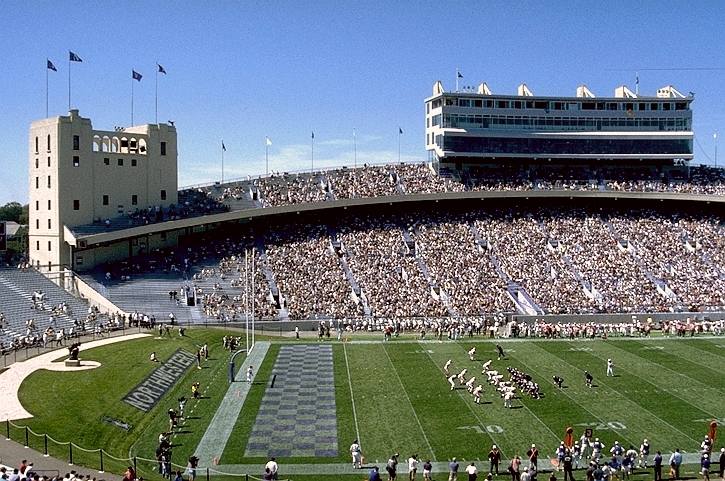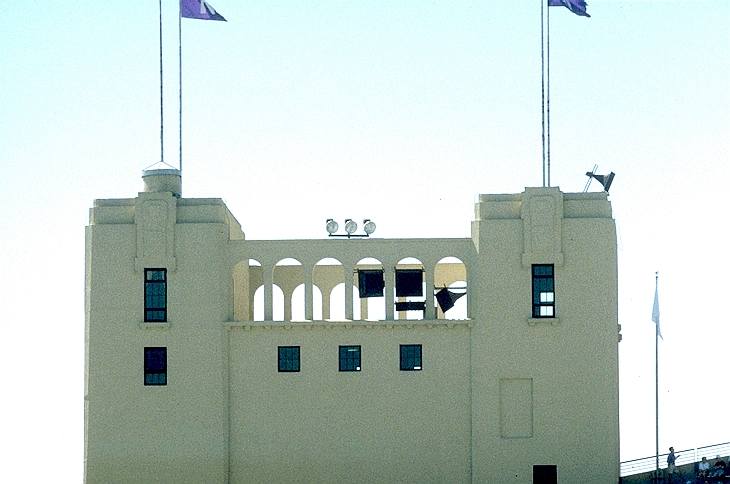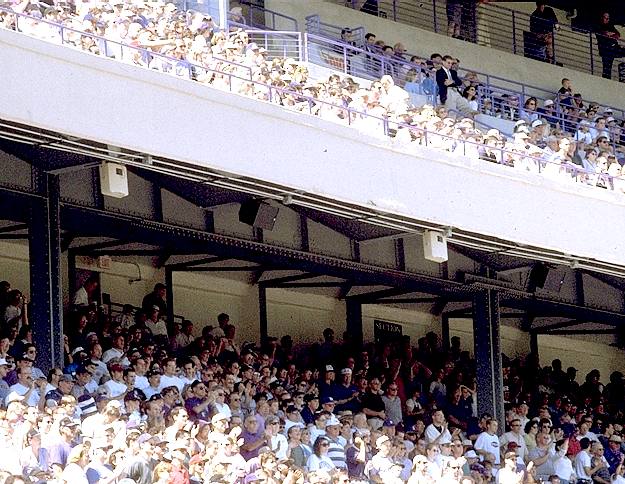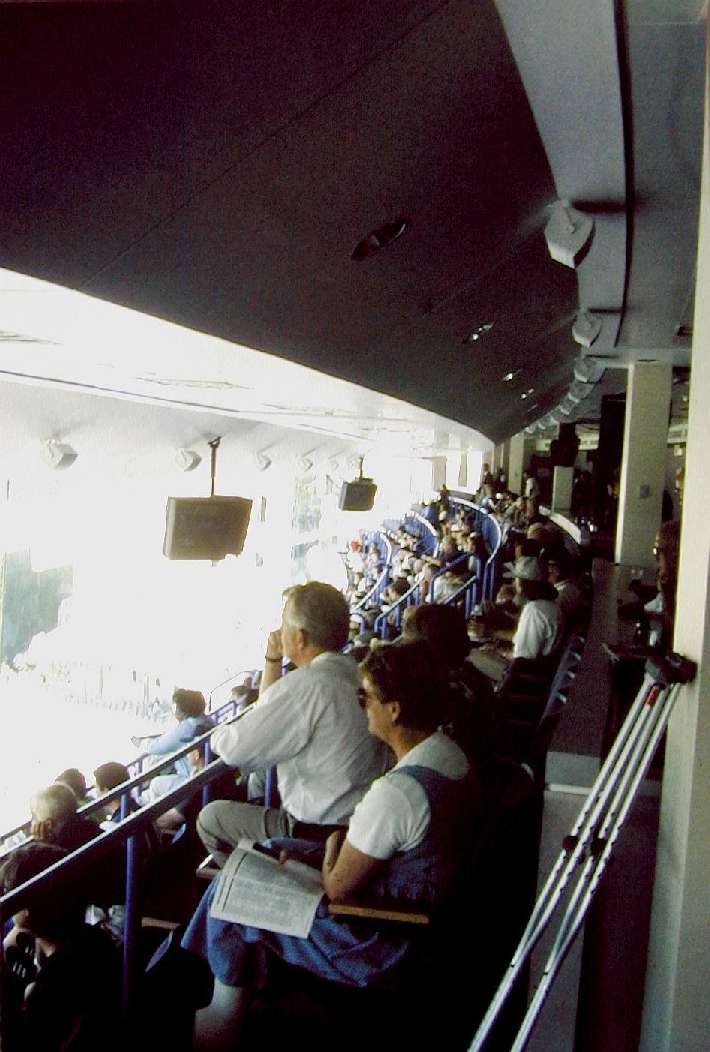

It had been many years since this serious scholastic institution had been represented by an equally serious football team. Games at the once proud 45,000 seat Dyche Stadium were poorly attended, and the facility itself was showing its age. All that changed in the '90's, when a football program that made their team a contender got them to the tournaments, and started bringing the alumni back to the games. A major fundrasing program was undertaken and renovation was completed in time to open the 1997 season.
There were several important design considerations. First, a previous system which covered the entire stadium from a cluster on top of the press box made life miserable for the working press inside, so this cluster location was immediately ruled out. More important, the stadium is in the middle of a residential neighborhood, so minimizing intrusion of the sound system into the neighborhood was critical. A key client executive wanted to put the loudspeaker system on a scoreboard located at the opposite end of the stadium from the apartment building, but this would have pointed the highest power long throw elements of the system straight at the building. Our first responsibility was thus to develop a better plan and convince the University that it was in their best interest.
Although neighborhood noise control was the deciding factor and the final system was the one that led to the best performance in that respect, the speed of sound also drove the design. For sound to be intelligible, a listener can't be confronted with sounds of nearly equal levels arriving at very different times, This timing issue meant that all loudspeakers covering the visitor's grandstand had to be in one of the two stair towers -- using both towers would have led to an unintelligible babble in many seats.

It didn't take long to realize that the two large stair towers flanking the main grandstand (see photo) would be great loudspeaker locations, but we did extensive computer modeling of several possible system configurations before settling on the one chosen. Although not shown in the photo, a long section of bleachers (but no grandstand) extends from end zone to end zone for "visitors" seating. Loudspeakers in the stair towers could cover the grandstand, but not the home grandstand or upper deck. Luckily, most of the area beyond the visitors' bleachers is owned by the University for a distance of at least three blocks, providing a buffer zone for the long throw loudspeaker system.
The final system uses almost a dozen different types of loudspeakers, from Community Light and Sound, Electro-Voice, Renkus-Heinz, RCF, and Sound Advance. The home grandstand is covered by two rows of loudspeakers on the underside of the edge of the upper deck (the black boxes in the photo below). One row faces the field, and reaches all the way to the front row. A second row of loudspeakers (light tan in color) covers the dozen or so rows of seats under the upper deck. The upper deck is covered by two horns, one on the roof of the stair tower (at right in the close-up photo) and the other at the right end of the press box.

Three new sections of fully and partially enclosed seats were added within and below the new pressbox structure. Each is covered by a separate sub-system. Patrons in the fully enclosed upper section can't hear any crowd noise or the pep band, so a separate system was installed to serve them. A stereo pair of mics on the face of the upper deck just over the pep band is fed to two rows of compact high fidelity loudspeakers (the small white boxes just over the windows and behind the second soffit -- the large boxes suspended in front of the window are video monitors which carry a feed from a broadcast truck).

Another separate system serves the press box -- the top floor for broadcast and the floor below it for print media. Both floors have direct wired feeds from the main park announcer, the official scorer, the two referee wireless mics. We specified a clean technical power system for the press area. In addition, there are tie lines to the home and visitors dressing room area for use by visiting broadcast media.
The system is implemented using the Peavey Mediamatrix digital signal processing system, originally developed by Peak Audio for use in the US Senate chamber, and recently installed in the US House of Representatives. Mediamatrix was chosen for its power and flexibility in meeting the very complex requirements of the system. It was also the least costly way to build the system -- separate components to do the job would have cost much more. And the DSP system makes the system much easier to modify to adapt to changing needs. This capability was used during the installation process to implement the stereo sound in the VIP suites.